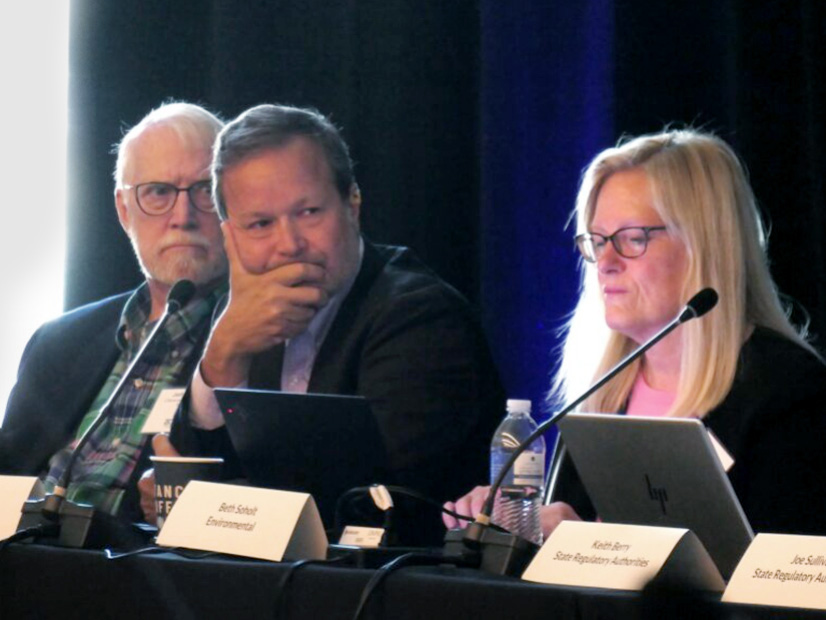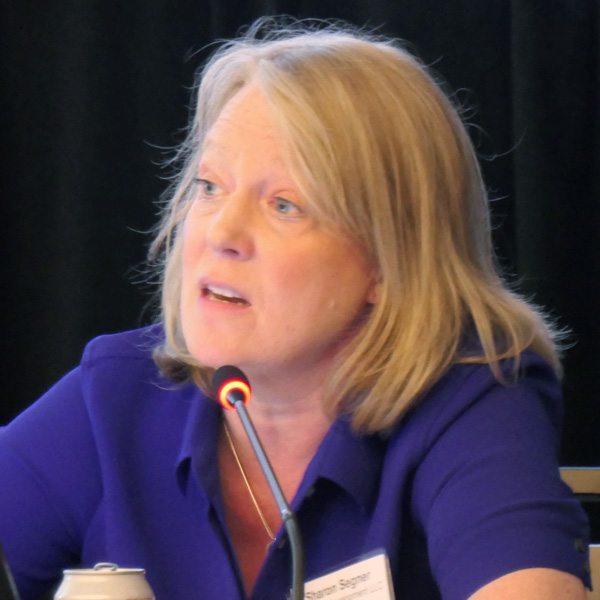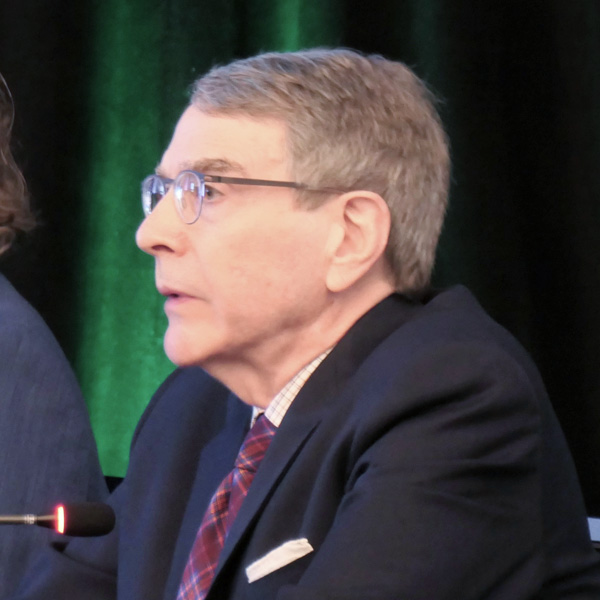
EAGAN, Minn. — Members of MISO’s Advisory Committee have emphasized that all players in the footprint need to act swiftly to position themselves for “hyperscale” load growth and EPA’s new carbon rule.
The Advisory Committee decided both topics were worthy of discussion at its quarterly meetup June 26.
Carbon Rule
Multiple MISO members framed EPA’s carbon rule as not as industry-altering as it seems. They said the directives generally were where the industry is headed but underscored that the rule makes the inevitable play out faster.
Minnesota Public Utilities Commissioner Joe Sullivan said some MISO states are less concerned about the rule because they’ve been gearing up for a decarbonized fleet. Other states in MISO are not as prepared, he said.
Sullivan said to quote former Mississippi Public Service Commissioner Brandon Presley, “Where you sit on this is relevant to where you were standing.”
“The rule might just be the current flavor of the uncertainty we’ve all been experiencing anyway,” Sullivan said. He added the rule “definitely” adds pressure to MISO’s capacity anxieties amid its first meaningful load growth in years.
Ameren’s Jeff Dodd said the carbon rule’s 2031 implementation is a tall order and construction needs to move quickly.
LS Power’s Sharon Segner said the rule underscores MISO’s obligation to hold developers to high standards so they meet project milestones on time with quality work.
“We are indeed in serious times, and serious times need serious oversight,” Segner said.
The Union of Concerned Scientists’ Sam Gomberg celebrated the carbon rule as the government “finally beginning” to address the perils of climate change.
“This rule will protect what’s left of our functioning ecosystem that society depends on. … To quote my favorite scientist, Ray Stantz of ‘Ghostbusters,’ we’re talking real, rapid ‘wrath-of-God type stuff,’” he said. “The opportunity is one to save our own asses.”
Gomberg said the most difficult thing about the rule might be wading through disinformation campaigns and politically motivated rhetoric. He acknowledged that members should redouble efforts around new transmission and generation projects alongside demand-side management. But he said he believes the expansion can happen swiftly and reliably.
“I think everyone would like some more flexibility [on the rule], but that ship has sailed when everyone has ignored the scientific evidence of the last 50 years,” he said.
But Paul Bailey, of coal lobby group America’s Power, said the rule means “massive coal retirements very soon” with only about a 2% resulting reduction in carbon emissions nationwide. He said the rule rightfully concerns many, as evidenced by extensive litigation.
Gomberg retorted that the coal industry’s trajectory isn’t affected much by the rule, save for the utilities that plan to keep coal plants online past 2039.
“It doesn’t necessarily change the future all that much. We’ve been talking about the phaseout of coal for quite some time now,” Gomberg said.
Wisconsin Public Service Commissioner Marcus Hawkins said the rule introduces concerns about the costs of stranded thermal assets. Sullivan agreed the potential for “ratepayer shocks” is worrying.
Load Growth
Equally urgent is the need to address massive load growth from new data centers, members decided.
Stakeholder Services Executive Director Suzie Jaworowski said the MISO region is experiencing data center growth, manufacturing reshoring and “big hyper-scale industry that needs unblinking power.”
Tract’s Nat Sahlstrom, a guest speaker who was Amazon’s first hire dedicated to energy procurement, said utilities and RTOs aren’t equipped for the data center load growth that’s coming. He also said data center energy procurement is no longer as simple as a “tech guy in flip-flops and a baseball cap” approaching Dominion for an additional 5 MW.
Utilities’ integrated resource plans are insufficient to meet the “scale and speed of cloud energy demand dynamics,” Sahlstrom said. He said the tech industry is partly to blame for distrust among utility planners because in the past, representatives would “clandestinely” approach utilities with promises for big demands for power that didn’t materialize.
These days, Sahlstrom said data centers are more transparent about their needs and using “every electron that they’re asking for.” He also said though data centers are hungry for clean electricity, some run the risk of “greenwashing” by using utilities’ thermal units, then investing in far-flung renewable generation and deeming their renewable energy targets met.
MISO Director Barbara Krumsiek asked if the industry is anticipating a public backlash to the “hyper-scale” of data centers and their zoning.
“Frankly, I don’t want a data center near my church. They’re not horrible, but nobody wants that in their backyard in the same way they don’t want transmission lines in their backyard,” Sahlstrom said. He added that data center campuses these days are sited more thoughtfully and remotely.
Clean Grid Alliance’s Beth Soholt said data centers share some of the characteristics associated with renewable energy development in terms of expanding tax bases, growing infrastructure and creating jobs.
Soholt said there might be an opportunity for data center developers to build where renewable energy is flush and locational marginal prices are lowest in MISO.
UCS’ Gomberg said MISO might need a new process to study large load additions and their impact on the system. He said he wondered if data centers might help pay for the manpower MISO may require to study new loads.
MISO Director Phyllis Currie urged load-serving entities to recalibrate their load forecasts and update them more often with MISO with legitimate economic development.
But Sullivan said he believes MISO regulators are anxious that utilities might “gild the lily” if probabilistic load forecasts are introduced and overstated load to pad bottom lines. He said it would help regulators’ distrust if data center representatives appear alongside utilities to assure commissions that the growth is real.
“The solution to this has got to be more transparency and collaboration,” Sullivan said.
Sahlstrom said data centers could stand to double a rural cooperative’s system demand within months after decades of stagnant load growth. He said developers are willing to pay for a “bespoke” integrated resource plan for their needs if the interconnection is a sure thing.
NextEra Energy’s Erin Murphy said her company and others want MISO to create a designated market participation and registration for co-located load and generation behind the same point of interconnection. She said MISO should harmonize” its load growth studies completed under annual Transmission Expansion Plan (MTEP) with its studies for new generation through its interconnection queue.
NextEra has suggested that the connected studies be reserved for “mega loads” and that MISO institute a minimum size requirement to consider the studies simultaneously. (See “NextEra Asks MISO to Study New Load and Generation Duos,” MISO Starting from Scratch on New Schedule for Reviewing Expedited Tx Projects.)


